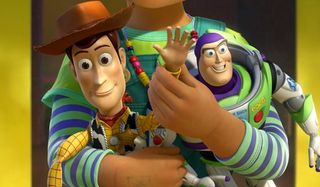Are These Pixar's Most Tear-Jerking Moments?

It’s certainly no secret that Pixar’s filmmaking formula loves to hit moviegoing audiences with a one-two punch of eye-popping aesthetics and shockingly salient storylines for animated adventures aimed at kids. In fact, despite the practice long being the studio’s M.O., they still manage to surprise us with their emotional resonance. Now, a supercut of said sentiment called Emotions of Pixar by Lindsay McCutcheon manages to capture Pixar’s best blatant tugs on our heartstrings. Check it out below.
Utilizing music that’s tried and true when it comes to somber reflection, Sia’s "Breathe Me," the clip collects distilled dramatics from most of Pixar’s features into one ridiculously woeful work. Seen in the form of this magnificent montage, attention is called to the nuances of pure expression across every one of Pixar’s work; even the ones generally seen as emotionally innocuous like Cars and the cotton candy silliness of Monster’s Inc. These clips highlight how Pixar manages to convey raw, genuinely visceral emotion in the most unlikely of ways that rival and even surpass serious live-action film aimed at adults.
The video clearly shows Pixar’s diversity with injected emotions utilizing universal concepts like breaking free from a protected existence (Finding Nemo) to even an unconventional, but ever-poignant love story between automatons (Wall-E.) It all resonates the human condition perfectly, despite it being dressed in cutesy bells and whistles. A more obsessed Pixar fan might be able cull upon encyclopedic knowledge to point out some notable missed moments, but overall, I'd say this video nailed its mission statement quite well.
Of course, you can't bring up "emotion" and Pixar without mentioning Up and Toy Story 3. You’ll probably get little debate against the idea that those two films contain the moments in which Pixar made its most emotional life-altering impact. Up’s notoriously sad exposition uses the all-too-real fleeting nature of life to explain how Carl Fredricksen becomes the crusty curmudgeon we come to know, preemptively rendering him a sympathetic figure. Likewise, the now-famous scene in Toy Story 3 in which Andy, grown and off to college, gives up his toys to young Bonnie reflects the bittersweet nature of transitions in life. Yet, while the two scenes serve extremely different tonal purposes, they both manage to leave a deep existential mark on the moviegoer; one pointing to our being defined by our pasts and the other by our future.
There’s probably very little to be gained by arguing whether one scene is more powerful than the other. It's all a testament to Pixar's ever-growing storytelling ambitions. In light of that, it also serves as a succinct primer for the studio’s upcoming feature, Inside Out, which, in the most literal way, explores each separate emotional component. We will see the deconstruction of a troubled young girl's subconscious with inner-emotional avatars seen through signature Pixar prettiness. The film looks to utilize laughs while taking us on a different kind of emotional adventure when it hits theaters on June 19.
CINEMABLEND NEWSLETTER
Your Daily Blend of Entertainment News
Most Popular






